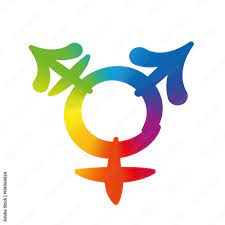In recent years, discussions around gender identity have become more prevalent, bringing attention to various terms and concepts. One such term is "transsexual," which refers to individuals whose gender identity is different from the sex they were assigned at birth. Understanding this term and its nuances is crucial for fostering a more inclusive and supportive society. In this article, we’ll explore what it means to be transsexual, how the term has evolved, and the significance of respecting the identities and experiences of transsexual individuals.
Understanding Transsexual: A Simple Definition
Transsexual is a term used to describe individuals who identify with a gender different from the one they were assigned at birth and often seek to transition to that gender, typically through medical interventions such as hormone therapy or surgeries. While it’s essential to recognize that not all trans individuals identify as transsexual, the term specifically applies to those who may pursue these medical changes as part of their transition process. Essentially, being transsexual is about aligning one’s physical body with their true gender identity.How To Reduce Estrogen Level In Male
The definition of transsexual can be nuanced, and it’s important to note that the term may not resonate with everyone in the transgender community. Some people prefer the broader term "transgender," which encompasses anyone whose gender identity doesn’t match their assigned sex at birth, including non-binary individuals. Understanding these distinctions is vital for respectful conversations and fostering acceptance.
The Evolution of the Term "Transsexual" Explained
The term "transsexual" emerged in the mid-20th century, primarily used by medical professionals to describe individuals seeking gender-affirming surgeries. It has since undergone significant evolution, with shifting societal attitudes reflecting broader understandings of gender. In the early days, being transsexual was often viewed through a medical lens, emphasizing pathology and deviating from societal norms. Over time, the focus has shifted towards self-identification and the importance of personal agency.
As awareness of gender diversity continues to grow, some advocates argue for the decreased use of the term "transsexual" in favor of "transgender," which is seen as more inclusive. This evolution reflects a broader cultural understanding that gender identity is complex and cannot be easily categorized. As language continues to adapt, it’s essential to be mindful of how terms are used and the preferences of individuals within the community.
Distinguishing Transsexual from Other Gender Identities
While transsexuality is a specific identity within the broader transgender spectrum, it’s important to recognize that not all transgender individuals identify as transsexual. The term typically implies a desire for medical transition, whereas other identities within the transgender community, such as non-binary, genderqueer, or genderfluid, may not involve such transitions at all. Understanding these distinctions helps to foster a more nuanced conversation about gender identity.
Additionally, some people may identify as transsexual but do not pursue medical interventions for various reasons, including financial constraints, health issues, or personal choice. Recognizing that gender identity is a deeply personal experience allows for the appreciation of the diverse ways individuals understand and express their gender.
The Importance of Respecting Transsexual Terminology
Using appropriate terminology is crucial in supporting transsexual individuals and validating their experiences. Referring to someone as transsexual when they identify as such affirms their identity and acknowledges their journey. Conversely, mislabeling or using outdated terms can perpetuate stigma and invalidate their experiences. Being respectful in language promotes a sense of belonging and acceptance in society.
Moreover, it is essential to listen to how individuals identify themselves and to use their preferred pronouns and terms. This practice goes beyond mere politeness; it is a matter of recognizing their humanity and validating their lived experiences. When society collectively commits to using respectful terminology, it creates an environment where transsexual individuals can thrive without fear of discrimination.
Common Misconceptions About Being Transsexual
One of the most prevalent misconceptions about transsexual individuals is that they are simply confused or going through a phase. This assumption undermines the reality of their experiences and the length of time many spend understanding their identity. Gender identity is not a choice or a trend; it is an intrinsic aspect of who a person is. Recognizing this helps combat stigmas and stereotypes associated with transsexuality.
Another common misconception is that transitioning is a straightforward process, both emotionally and physically. The journey of transitioning can be complex, involving navigating healthcare systems, societal pressures, and personal relationships. Each individual’s experience is unique, and it is essential to approach the topic with empathy and open-mindedness, acknowledging the challenges transsexual individuals face along their journey.
The Journey: Transitioning as a Transsexual Person
Transitioning is often a multi-faceted process for transsexual individuals, encompassing not only physical changes but also emotional and social aspects. For many, the journey starts with self-discovery and acceptance, leading to essential steps such as seeking therapy, hormone therapy, and potential surgeries. Each person’s transition is personal and may follow different timelines or paths based on their needs, desires, and circumstances.
Support from friends, family, and the community can play a significant role in a transsexual person’s transition. Affirming their identity and encouraging their journey fosters resilience and confidence. It’s important to recognize that transitioning is not just about medical procedures; it’s also about embracing one’s true self and finding comfort in living authentically.
Legal and Social Rights of Transsexual Individuals
Transsexual individuals often face various challenges related to legal and social rights, including discrimination in employment, housing, and healthcare. In many places, laws may not adequately protect transsexual individuals from discrimination, making advocacy for their rights critical. Understanding the legal landscape can empower transsexual individuals and their advocates to push for necessary legislation and ensure equal treatment and protection under the law.
Additionally, social acceptance plays a crucial role in the well-being of transsexual individuals. Supportive environments contribute to mental health and overall quality of life. By fostering awareness and understanding of the issues transsexual individuals face, society can work towards creating a more inclusive and equitable environment where everyone has the opportunity to thrive.
Supporting Transsexual Friends and Community Members
Supporting transsexual friends and community members involves more than just using the correct terminology; it requires active engagement and allyship. Listening to their experiences, validating their feelings, and providing emotional support are all essential components of being a good friend. This support can also extend to advocating for their rights in social and professional settings, helping to create safer spaces for them to express their identities.
Educating oneself about the challenges faced by transsexual individuals and the broader LGBTQ+ community is another vital aspect of support. Engaging in conversations, attending workshops, or participating in community events can enhance understanding and demonstrate solidarity. Ultimately, being an ally means standing alongside transsexual individuals and amplifying their voices while recognizing and addressing one’s own biases and privileges.
Understanding the term "transsexual" and the experiences of those who identify as such is an essential step toward creating a more inclusive society. By respecting terminology, combating misconceptions, and actively supporting transsexual individuals, we can foster environments where everyone can thrive and express their true selves. Through education and empathy, we can collectively contribute to a more understanding and accepting world for all gender identities.


